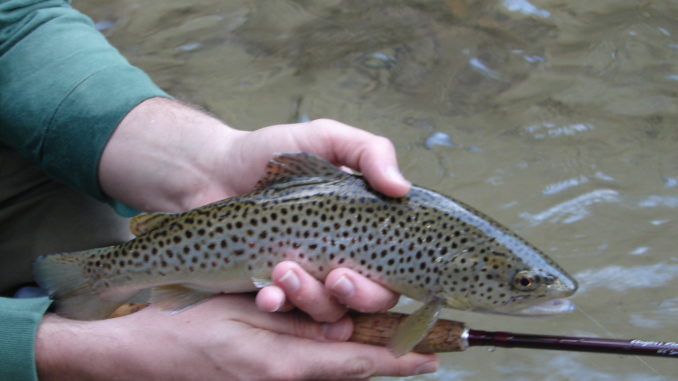
Most South Carolina freestone streams do not support prolific insect hatches — the Chattooga River may be the exception — but most streams support some level of aquatic insect life.
Good choices for spring trips should include Blue Quills, Quill Gordons, Early Black Stones, Early Brown Stones, Dun Caddis, and Blue-Winged Olives. Smaller flies in sizes 16 to 18 are best for early spring, moving to 12 to 14 in some patterns as spring progresses.
In addition, later in the spring, March Brown, Grey Fox, Light Cahill, various Caddis patterns, and Giant Black Stones should be added to the arsenal.
When in doubt about matching a hatch, it is usually better to go smaller than bigger. If you have trouble seeing the small patterns on the water, use a large dry fly as an indicator and the small fly on a dropper tied to the bend of the hook.
When fishing for stocked fish, egg patterns are very successful, especially soon after they are stocked and before they learn to key on the available aquatic insects. Some purists don’t like to use egg patterns, but at times they can be the “go-to” pattern for taking fish.
Later in the season, don’t forget to pack some terrestrials in your fly box. This should include hoppers, beetles, ants and cricket patterns. Hoppers can raise some big fish, and nothing is more exciting than seeing a large trout take a surface offering.
An assortment of streamers for appealing to the lunker browns is also an asset.
A good fly-hatch schedule is a great asset. One is A Smoky Mountains & Southern Appalachians Fly Hatch Schedule by Ken Snelling.
Wonder why fishermen carry so many flies to the stream? You never know what is going to work on any given day.

Be the first to comment